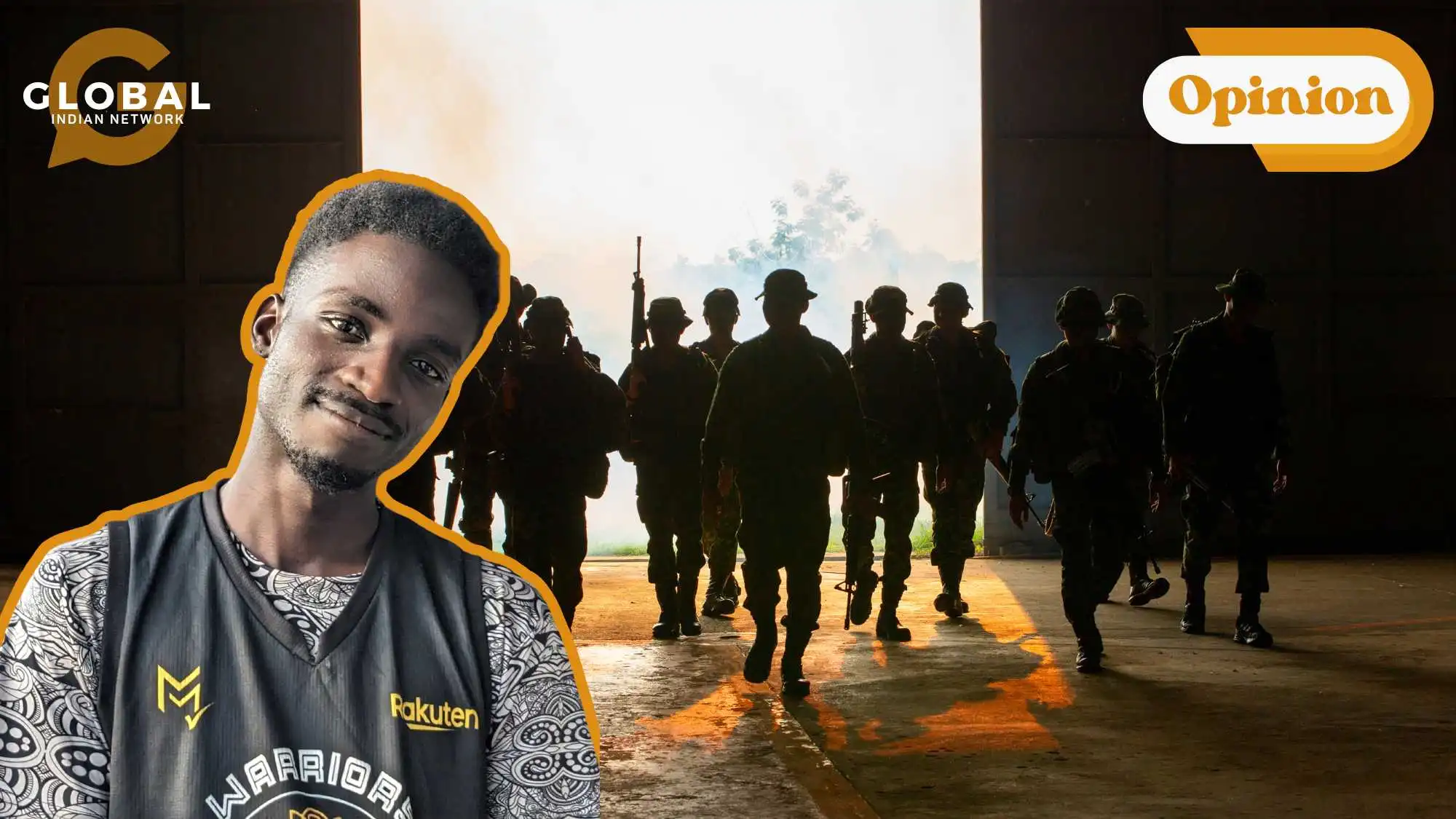The “military-entertainment complex” refers to the growing relationship between national militaries and the entertainment industry, particularly film, television, video games, and even social media. Rooted in the United States but increasingly global, this alliance extends beyond mere cooperation. It is a carefully cultivated partnership that serves mutual interests. Militaries gain public support, improved recruitment, and sanitized narratives; entertainment producers get access to weapons, soldiers, and locations, along with a built-in audience for explosive, heroic content. However, this relationship has serious implications for democracy, peace and the reality of war.
What is the Military-Entertainment Complex?
The term is a cousin of President Dwight D. Eisenhower of the United States “military-industrial complex,” which he used to refer to and warn of a permanent arms industry influencing government policy. Major companies, like Lockheed Martin and Boeing, spend heavily on lobbying, thus influencing the decisions made by the government.
The military-entertainment complex adds cultural production to this equation. Through direct collaboration with filmmakers, game developers, and influencers, militaries shape the stories we consume. The result is a society where military force is normalized, glorified, and rarely questioned, as it is seen as overwhelmingly positive. Entertainment ceases to be just entertainment, and it becomes a form and tool of armed forces to shape narratives and promote propaganda.
How Militaries Foster This Relationship
Militaries worldwide actively engage with media producers. The United States Department of Defense (DoD) has an entire office dedicated to reviewing and approving Hollywood scripts. Films that portray the military in a positive light, such as Top Gun (1986 and its 2022 sequel), Transformers, or Lone Survivor, often receive support in the form of equipment, personnel, and access to military bases. This cooperation isn’t free; it often comes with script changes to ensure alignment with perceived military values and objectives.
This practice is not unique to the U.S. In China, the People’s Liberation Army works closely with film studios to promote national unity and military strength, such as in Wolf Warrior 2 or The Battle at Lake Changjin, both massive box office successes were infused with nationalist messaging. Russia has used state-funded media to produce military dramas and sponsor patriotic war games on TV. Even smaller nations have followed suit; for example, the Indian military increasingly collaborates with Bollywood to produce war films that frame real-life operations as moral and heroic crusades, even though reality is often more complex than that.
Video games also play a massive role. The U.S. Army developed America’s Army, a free-to-play game that doubled as a recruitment tool. Meanwhile, game franchises like Call of Duty and Battlefield often portray Western militaries as heroic while dehumanizing enemies, usually Russian or Middle Eastern and glossing over war crimes. These games are played by millions of young people, subtly instilling pro-Western military attitudes.

Manifestations in Popular Culture
The most visible manifestation is in blockbuster films. Movies like American Sniper, Black Hawk Down, or Zero Dark Thirty present sanitized, one-sided views of conflict. They often ignore civilian casualties, the moral ambiguity of warfare, or the role of economic and geopolitical interests. Instead, audiences are sold a simple binary narrative of good versus evil, with elite soldiers as the unquestionable heroes.
Social media has also become a frontier. Military branches run TikTok and Instagram accounts showcasing daily life in the armed forces, skydives, workouts, camaraderie, and even romantic content, curating a brand that appeals to younger audiences. Influencers, sometimes unknowingly, amplify this aesthetic. For instance, the Blue Angels, a performance squadron of the United States Navy who have recently received a Netflix docuseries, is almost entirely dedicated to this. In some cases, soldiers themselves become content creators, blending defense messaging with internet culture.
Beyond Western contexts, the same dynamic applies. Israeli defense forces maintain a strong social media presence to influence global perception, especially during military operations. China’s use of patriotic influencers to support its stance on Taiwan or Hong Kong reveals how state-aligned messaging is woven into digital culture. Even in conflict zones, such as Ukraine or Gaza, footage from drones or frontlines is edited for social media virality, creating gamified portrayals of real warfare.
Dangers and Consequences
The military-entertainment complex poses many dangers to the general public. These include the following.
Distortion of Reality
By prioritizing action and heroism over complexity and suffering, entertainment media often distort the true nature of war. Civilian casualties, PTSD, political motives, and long-term consequences are downplayed or erased. Almost every one of these films ends with a patriotic monologue and a heroic sacrifice while ignoring the many casualties.
Recruitment and Indoctrination
Youth are especially vulnerable. Games and movies glamorize combat, reducing ethical concerns and creating a funnel where joining the military appears noble and exciting while its darker realities are often hidden. After the release of the first Top Gun film, there was a surge in the number of people signing up to join the United States Navy and Airforce. This trend holds for all major films of their time.
Soft Censorship
Creators who want military support must align with certain narratives. This restricts artistic freedom and makes it harder for critical or anti-war media to get made or reach audiences.
Global Arms Race in Storytelling
As more countries adopt similar strategies, we risk a world where entertainment becomes a battleground of nationalistic propaganda, feeding xenophobia and militarism.
Conclusion
The military-entertainment complex is more than a partnership between Hollywood and the Pentagon; it is a powerful force shaping public consciousness. It builds myths around militaries, manipulates public support, and blurs the line between fiction and reality. While not inherently malicious, its unchecked influence poses serious threats to democratic accountability, ethical media, and global peace.
Recognizing its power is the first step toward resisting it. Audiences must learn to critically engage with war-related media, demanding diverse stories that include dissenting voices, civilian perspectives, and the full consequences of military action. Likewise, creators must question whether their work supports truth or simply reinforces state agendas.

Let us know your thoughts. If you have burning thoughts or opinions to express, please feel free to reach out to us at larra@globalindiannetwork.com.









